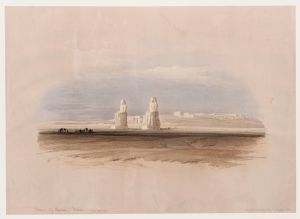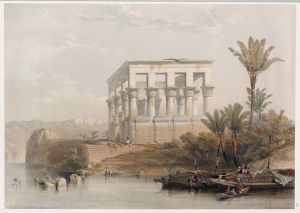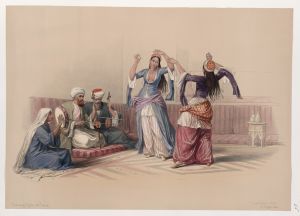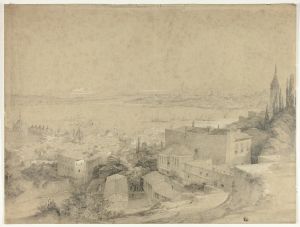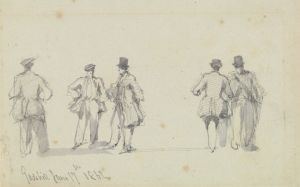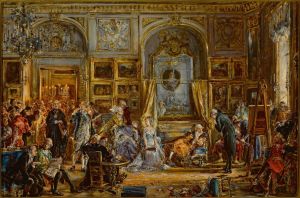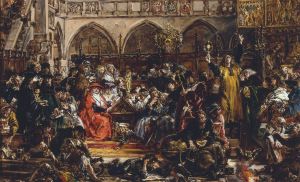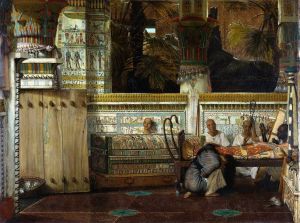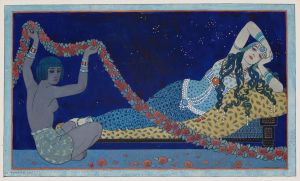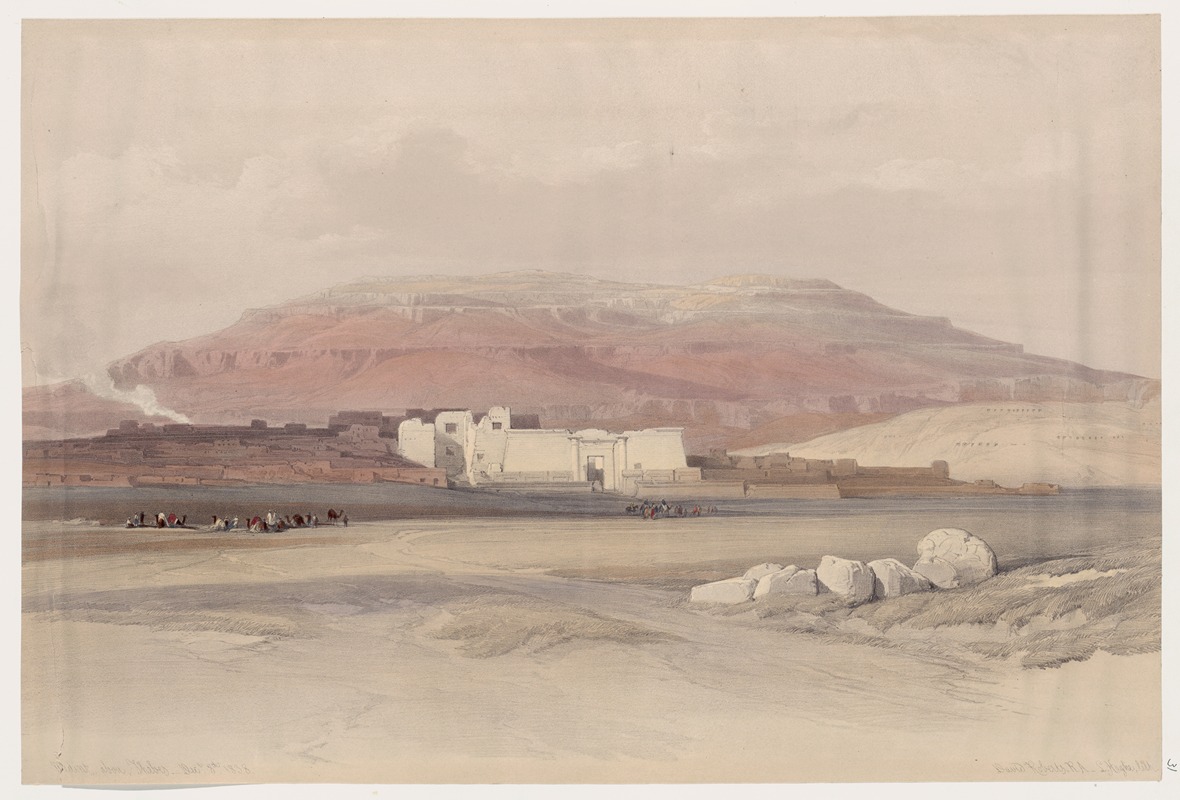
Medint [sic] Abou [Medinet Habu], Thebes. Dec. 8th, 1838.
A hand-painted replica of David Roberts’s masterpiece Medint [sic] Abou [Medinet Habu], Thebes. Dec. 8th, 1838., meticulously crafted by professional artists to capture the true essence of the original. Each piece is created with museum-quality canvas and rare mineral pigments, carefully painted by experienced artists with delicate brushstrokes and rich, layered colors to perfectly recreate the texture of the original artwork. Unlike machine-printed reproductions, this hand-painted version brings the painting to life, infused with the artist’s emotions and skill in every stroke. Whether for personal collection or home decoration, it instantly elevates the artistic atmosphere of any space.
David Roberts was a Scottish painter known for his detailed and historically significant lithographs and paintings of architectural and historical sites across Europe and the Middle East. One of his notable works is "Medinet Habu, Thebes. Dec. 8th, 1838," which captures the grandeur of the ancient Egyptian temple complex located on the west bank of the Nile River in modern-day Luxor.
Medinet Habu is one of the most important archaeological sites in Egypt, primarily known for the Mortuary Temple of Ramesses III. This temple complex is renowned for its well-preserved reliefs and inscriptions, which provide valuable insights into the history and culture of ancient Egypt. The site served as a significant religious and administrative center during the New Kingdom period.
David Roberts visited Egypt as part of his extensive travels in the Middle East between 1838 and 1839. His journey was part of a larger trend during the 19th century when European artists and scholars were increasingly fascinated by the ancient cultures of the region. Roberts's work is particularly significant because he was one of the first European artists to travel independently to the Middle East, rather than as part of a diplomatic or military mission.
Roberts's depiction of Medinet Habu is characterized by its meticulous attention to detail and its ability to convey the scale and majesty of the ancient structures. His paintings and lithographs were based on sketches he made on-site, which he later developed into finished works upon his return to Britain. These works were published as part of a series titled "The Holy Land, Syria, Idumea, Arabia, Egypt, and Nubia," which was released between 1842 and 1849. The series was highly acclaimed for its artistic quality and its contribution to the Western understanding of Middle Eastern cultures and landscapes.
The lithographs were produced by Louis Haghe, a prominent Belgian lithographer, who worked closely with Roberts to ensure that the final prints accurately reflected the original sketches. The collaboration between Roberts and Haghe was instrumental in the success of the series, as Haghe's skillful lithography brought Roberts's detailed and atmospheric sketches to life.
Roberts's work, including "Medinet Habu, Thebes. Dec. 8th, 1838," played a crucial role in popularizing the study of Egyptology in Europe. His images provided a visual record of sites that were, at the time, largely inaccessible to the general public. They also contributed to the growing interest in preserving and studying ancient monuments, which eventually led to more systematic archaeological efforts in the region.
Today, David Roberts's paintings and lithographs are valued not only for their artistic merit but also for their historical significance. They offer a glimpse into the 19th-century European perspective on the ancient world and continue to be appreciated by art historians, archaeologists, and the general public alike.





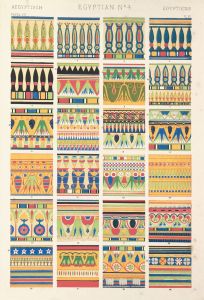
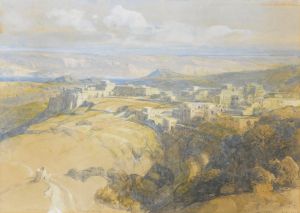
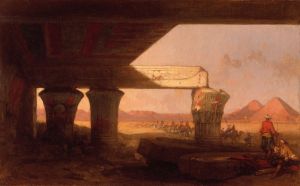
![Excavated temples of Aboosimble [Abû Sunbul], Nubia.](/imgs/217481/s/david-roberts-excavated-temples-of-aboosimble-abu-sunbul-nubia-2ca5e7e8.jpg)
![Medinet Abou [Medinet Habu], Thebes. Dec. 5th, 1832.](/imgs/217510/s/david-roberts-medinet-abou-medinet-habu-thebes-dec-5th-1832-9c2109da.jpg)
